Most automatic car washes are bad for your paint. The brushes are violent and full of contaminants which can cause damage. Touch-free car washes are much safer in terms of scratches, but can still wreak havoc on your wax, sealant, or ceramic coating. A traditional hand wash is always safer.
Table of contents
Different types of car washes (and how they can cause damage)
Traditional brush car washes
The traditional automatic car wash uses a post of rotating foam arms that slap your car more than an episode of The Three Stooges. The damage these foam appendages alone can do to your vehicle is only compounded by the conditions of an automatic car wash.
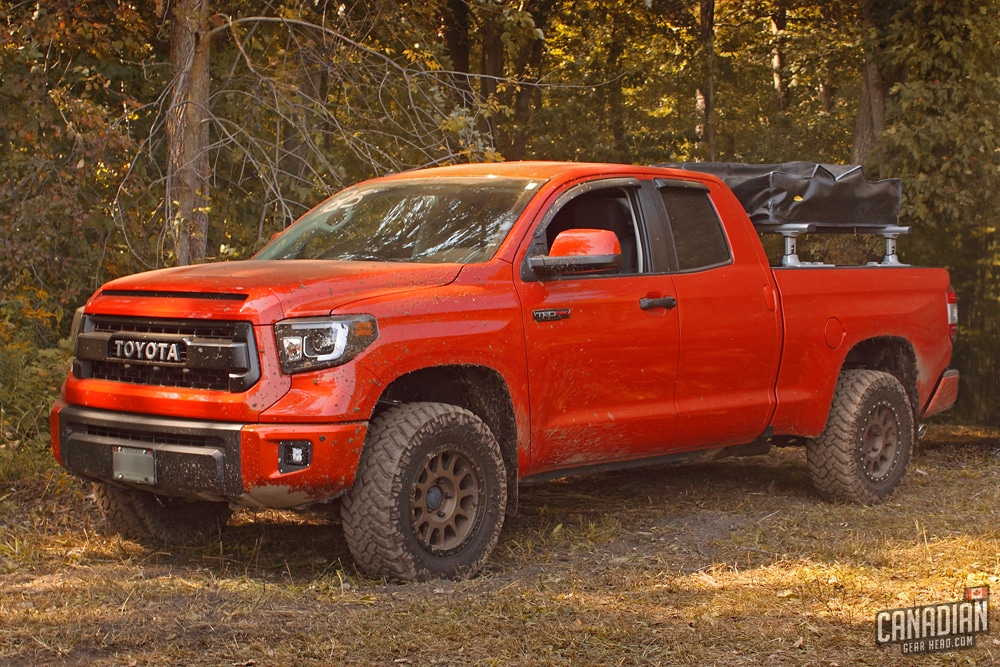
The truck before you may have just dumped a metric ton of dirt and gravel into the brushes from his offroad adventure. Now on top of Moe going to town on your paint, he’s also grinding mother nature’s trail mix into your clear coat.
Touchless (soft touch) car washes
What about touchless car washes though? (Notice I said touch-LESS, not touch-free. There’s a difference!) The cloth is softer than the foam so theoretically, it should do less harm. Sound logic but it’s also incorrect.
The soft cloth is more likely to hang on to the dirt and grime from the previous cars. This makes those soft cloth bristles more like 240 grit sandpaper, giving you more scratches and swirl marks than you can shake a stick at.
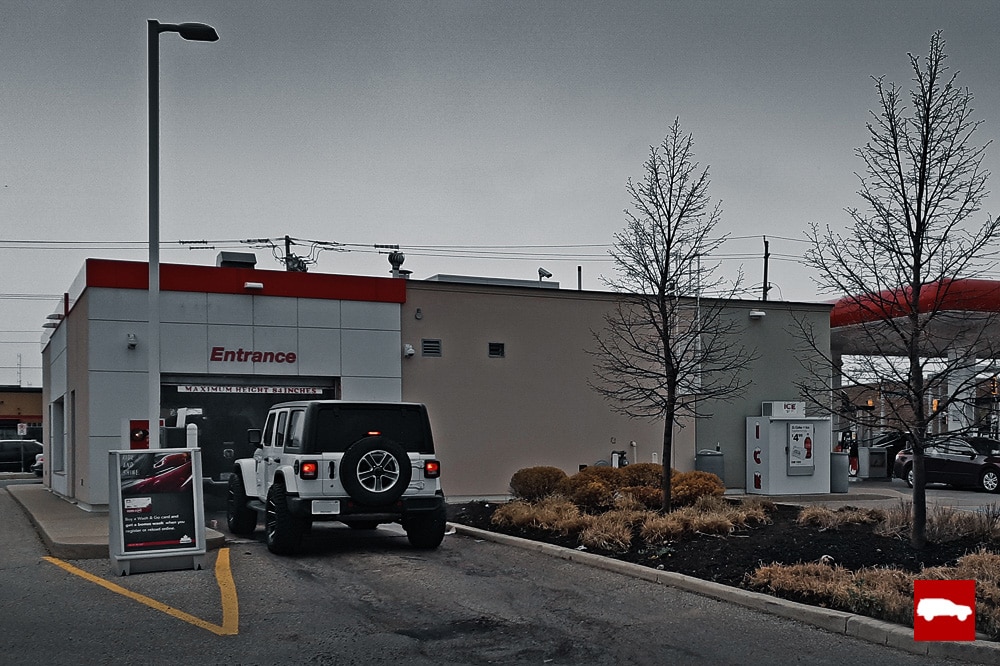
Touch-free car washes
If both of the previous options are the equivalent of filling your wash bucket with sand and gravel, surely the touch-free option is the way to go. The touch-free car wash is indeed less likely to cause physical damage to your vehicle, but it still has its drawbacks.
For instance, to compensate for not being able to physically touch your car two things have to happen:
- The water pressure has to be raised considerably just to knock off any loose debris.
- Harsh chemicals are used in hopes of breaking down the dirt, dust, and road grime.
Moreover, the chemicals used aren’t specific to the surface being cleaned – the soap being used to clean the wheels is also being used on the paint, vinyl, rubber, plastic, and glass.
There’s a reason companies develop specific products for the different areas of the vehicle.
Coin-operated car washes
The coin-operated car wash can be a decent option though if all you’re missing at home is a pressure washer and cover from the sun. It provides both while allowing you to make sure your car is washed carefully.
WARNING
Never use that disgusting brush that spits out multi-colored soaps! The bristles are very hard and more than likely filled with contaminants from people using it on their wheels, exhaust, and undercarriage. This will surely put scratches in your paint.
The proper etiquette must be followed in these establishments to avoid getting kicked out or annoying other people. Always make sure you go at a time when there are little to no customers – if your 1-hour detail inconveniences too many people, you’ll probably be asked to leave by the owner. Try going late at night or early in the morning.
I recommend using only the high-pressure wash and spot-free rinse options. Bring your own buckets with soap and your choice of wash mitt or microfiber towels to wash the car and dry it before moving out into direct sunlight.
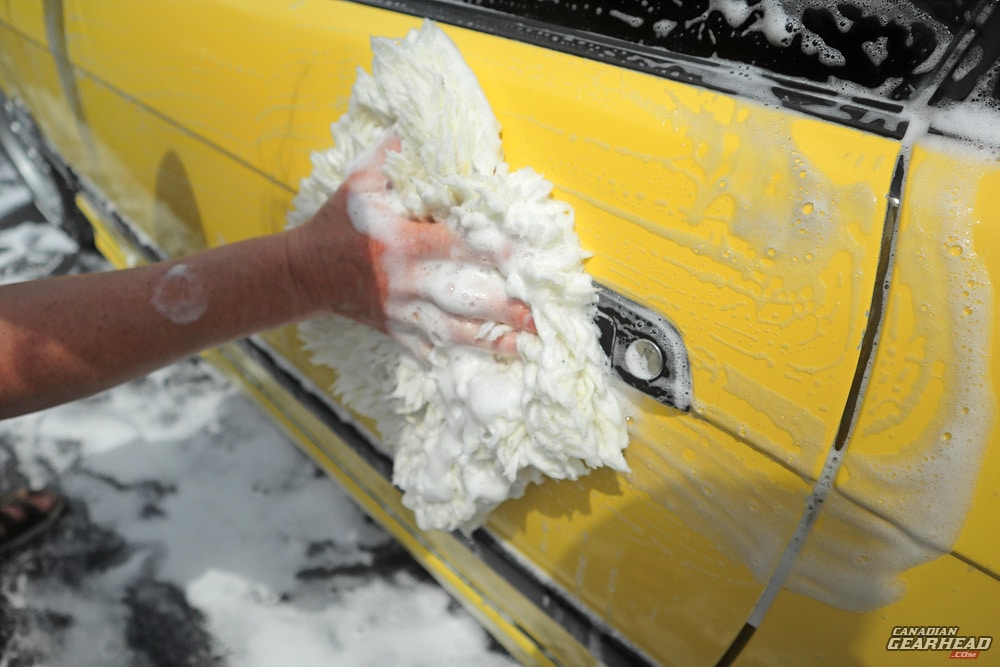
Will a touch-free car wash strip your wax or coating?
Touch-free car washes use high-pressure water combined with harsh chemicals and soaps to break down the dirt on your car’s surface. How then, do these chemicals interact with your chosen level of paint protection, and can they actually remove or damage your wax, sealant, or ceramic coating?
Carnauba wax
Wax is easy to use, and just about anyone can get their paint to sparkle a little brighter with a coat of wax. Since it’s so easy to apply it can also be stripped easily, though.
In most cases, all you need to strip your coat of wax is dish soap or a dedicated wax stripper. This is essentially what a touch-free car wash is doing to your coat of wax.
The spray wax at the end of the tunnel isn’t even close to the same thing as a hand-applied carnauba wax, so it’s not an even trade.
Synthetic paint sealant
Synthetic sealants are generally more durable than waxes and hang on more tightly to the paint than waxes do. Since it’s stronger than wax it will hold up better than wax.
It will eventually break down the sealant though. Not quite as quickly or easily as wax, but it will be removed eventually if you continue using automatic car washes.
Ceramic coating
Ceramic coatings are so much more durable than sealants and waxes. A touch-free carwash can still degrade your coating but it’s more likely to cause a build-up of chemicals on the surface of your ceramic coating than it is to remove it.
If you must go through an automatic car wash with your ceramic coated vehicle, opt for the cheaper touch-free with none of the extras, aside from an undercarriage spray if you are so inclined.
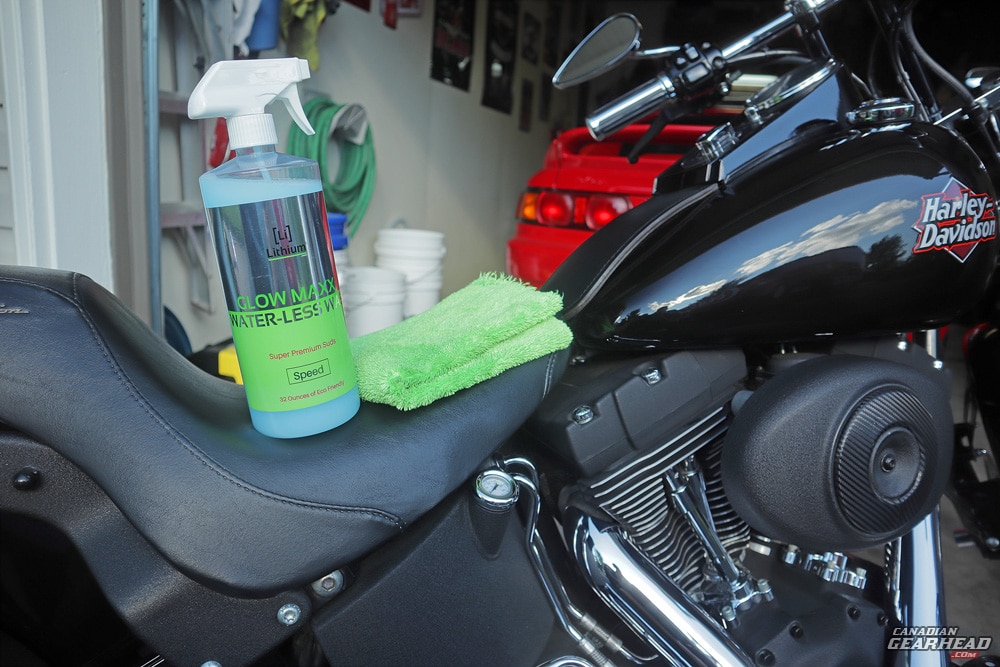
It’s also a good idea to use a waterless wash that is compatible with your coating afterward, to get that pesky pinstripe of dirt the tunnel wash missed.
Then follow that up with a soft drying towel and your favorite drying aid. This still isn’t an ideal situation, but the ceramic coating is the toughest of the three.
Touch-free car washes vs unprotected paint
Wax and sealant are slowly removed with each wash and ceramic coatings can degrade over time. What are these machines doing to paint with no protection at all? As you probably guessed, it’s not good.
Remember those harsh chemicals we talked about? Over time these detergents can actually damage your clear coat, along with drying out your rubber and potentially discoloring the plastic trim. In short, touch-free car washes are rough on protected cars and even rougher on unprotected cars.
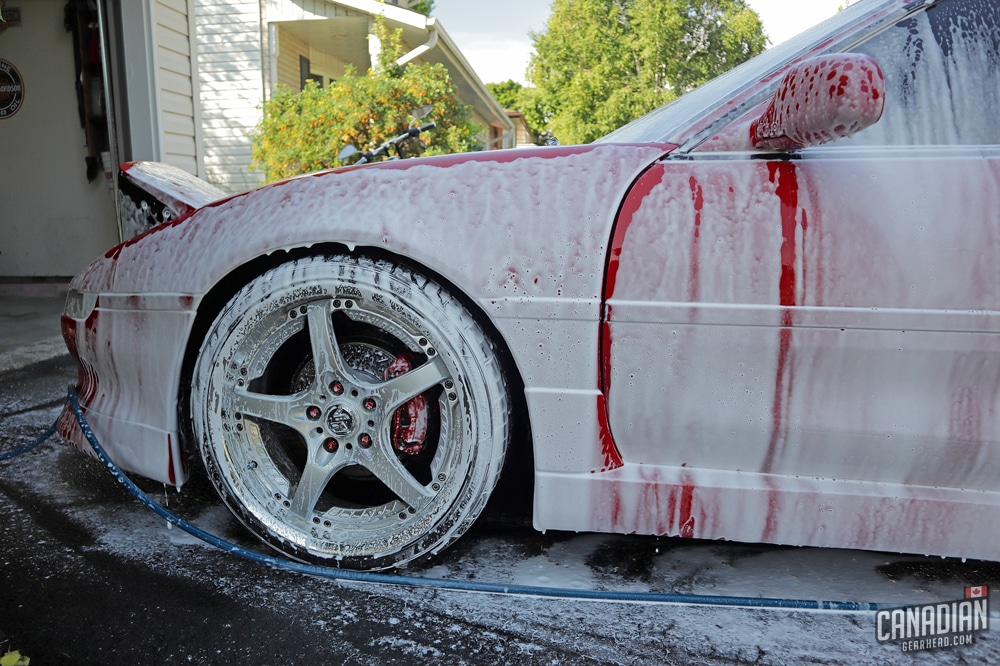
Automatic car washes and modified vehicles
Any modification that alters the exterior of your vehicle is a potential hang-up for an automatic car wash with brushes. This shouldn’t be too much of a problem though if you’re using a touch-free automatic car wash.
Some car washes require you to park one or both front wheels in a chain-driven dolly and keep your transmission in neutral as it pulls your car through the tunnel. This is a recipe for curbed wheels (scratches on the faces).
Others have guard rails down the center of the tunnel and could scrape the underside of your vehicle if it is lower than factory ride height or is just a lower car from the factory.
Lifted trucks may be too tall for the car wash. Luckily, most car washes have a maximum height warning with a horizontal maximum height safety sign. Make sure you know the different risks each car wash poses to your vehicle.
Alternatives to automatic car washes
First and foremost, regularly cleaning your car will make it easier and save you time. If you have access to water, a thorough wash at home is your absolute best option.
If a garage isn’t an option, getting an affordable canvas carport is a great way to keep out of the sun while washing to prevent water spots. Adding a water deionizer to your washing setup can go a long way in helping to prevent water spots when washing outdoors.
Washing your car in direct sunlight isn’t the best option, but it is possible with the right technique. Learn all about that in this article:
If you don’t have access to water and your car isn’t dirty but rather has a light layer of dust, I’d recommend a rinseless wash. A small amount of water is still needed to use these products but you don’t need to have access to running water outside.
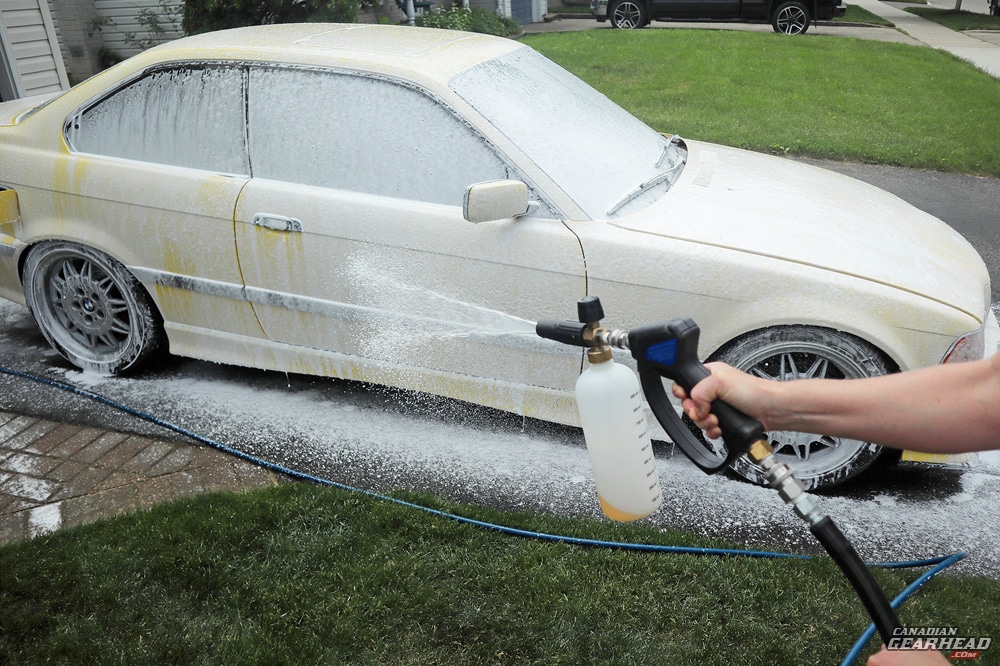
Final thoughts – Automatic car washes should be avoided
Not all automatic car washes are the same. The old-style ones that touch your car physically with brushes should always be avoided at all costs.
Touch-free and coin-operated car washes can be helpful if you aren’t able to wash your car at home though.
In the end, it’s always better to wash your car yourself if you care about your paint and the protection you put on it.
What’s your opinion of automatic car washes? Comment below!
You may also like
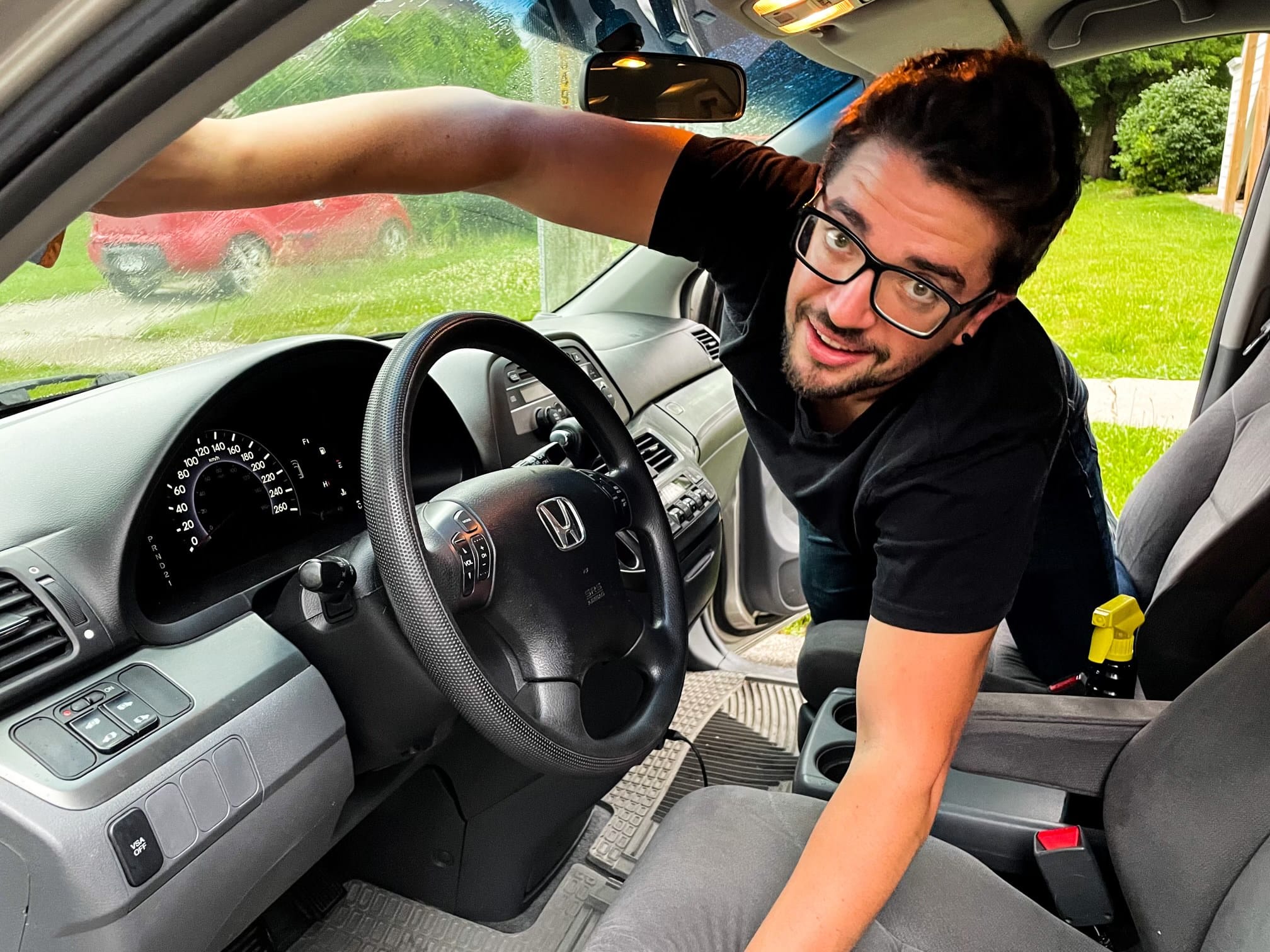
Jeremy got his start in the automotive industry in 2012 as a detailer. He also tried sales and a role in the service department at a Chrysler dealership before deciding to become an automotive technician for Volkswagen. Read more about Jeremy:
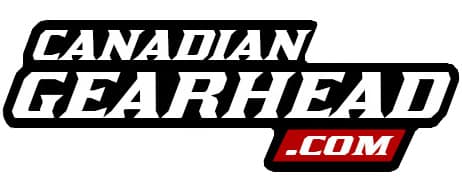
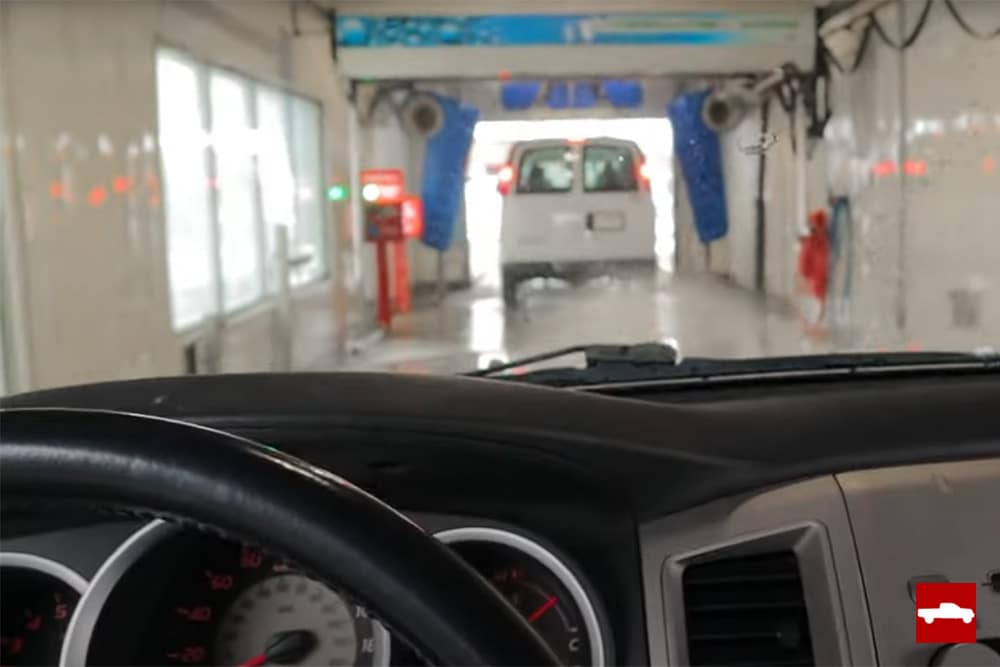
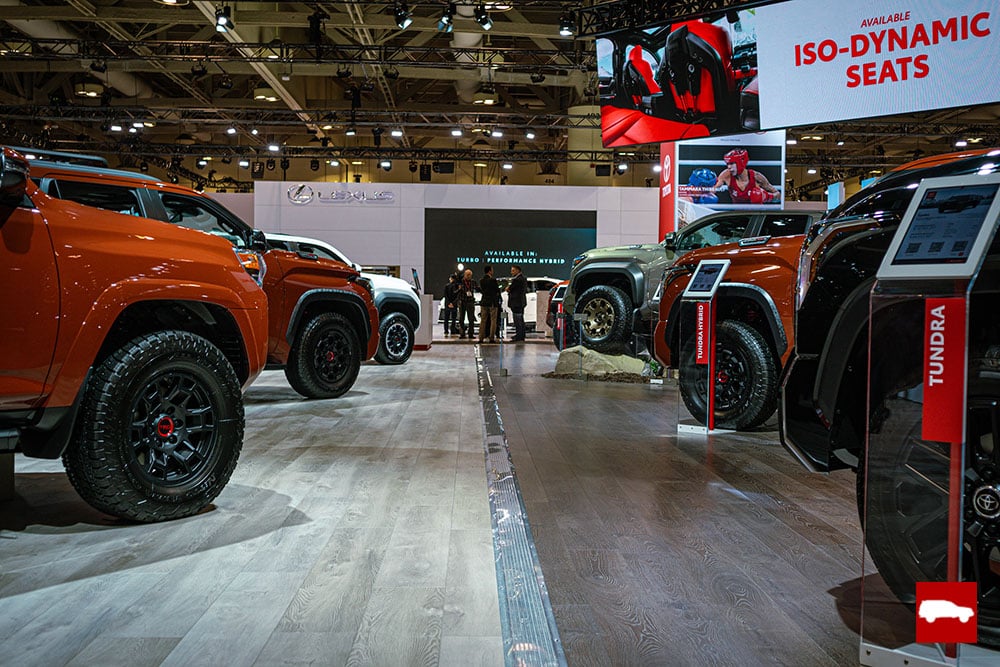
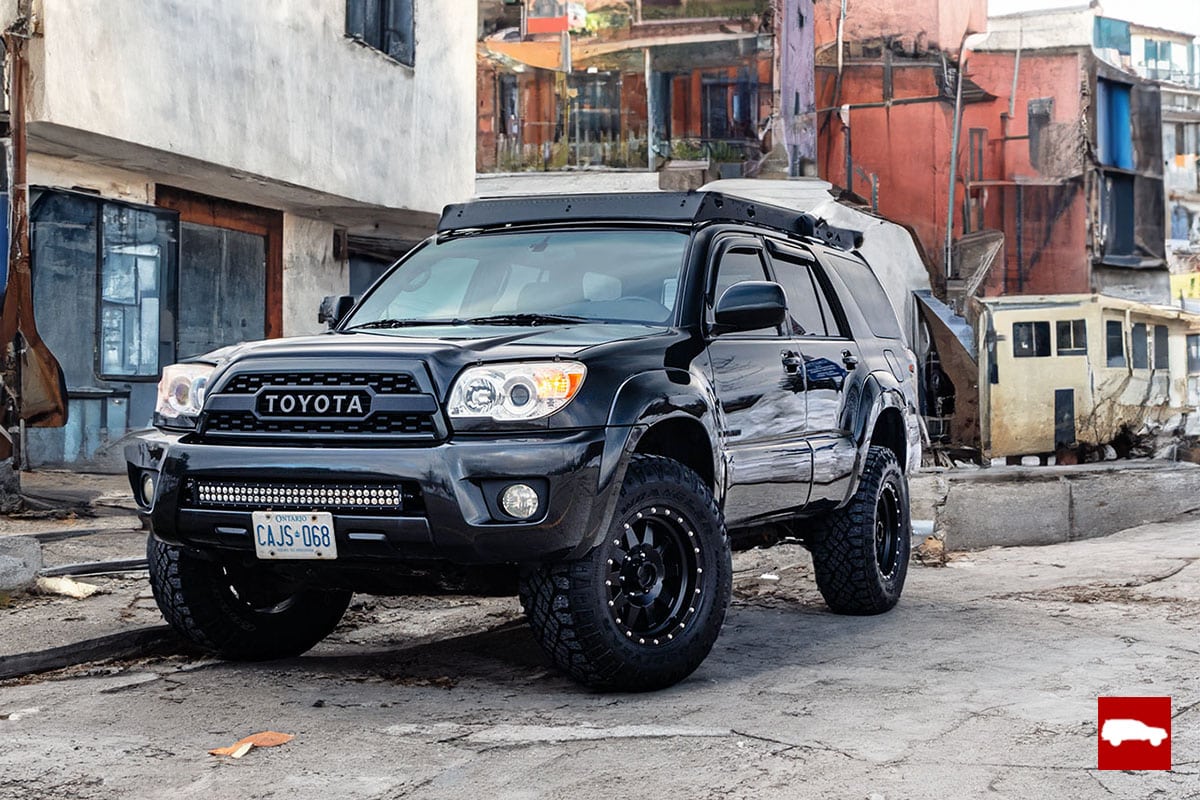
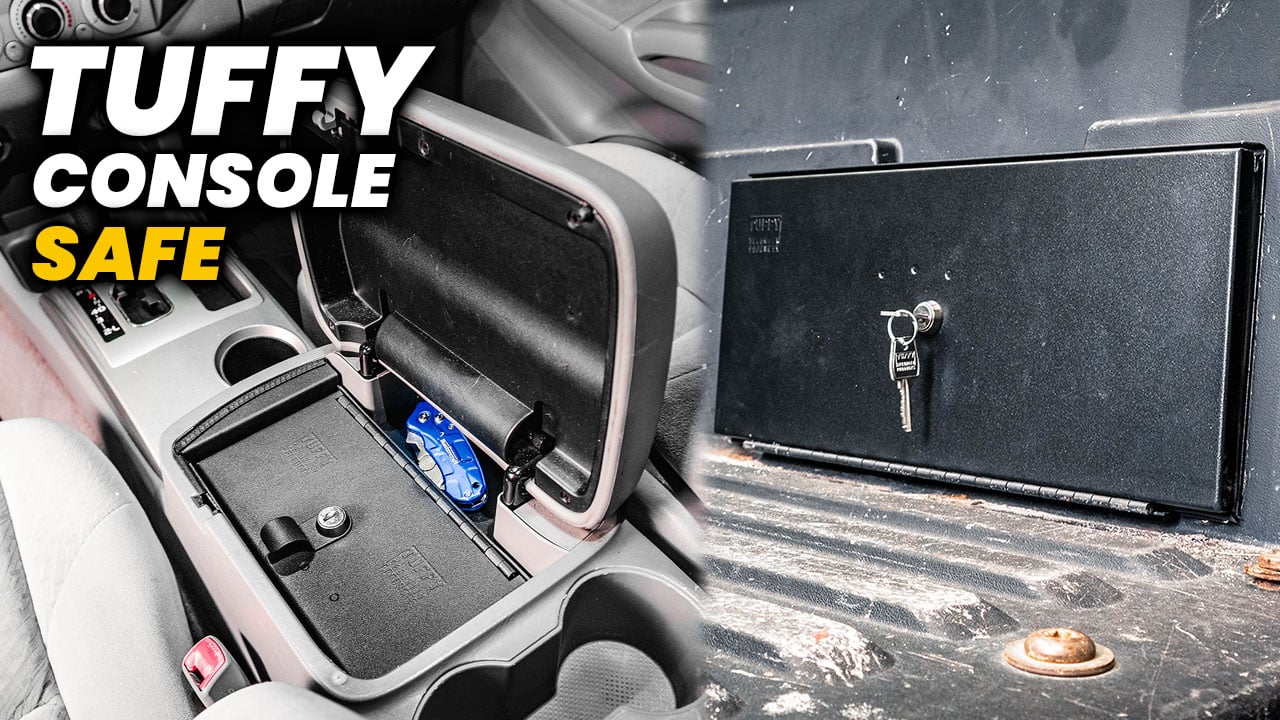
Leave a Reply